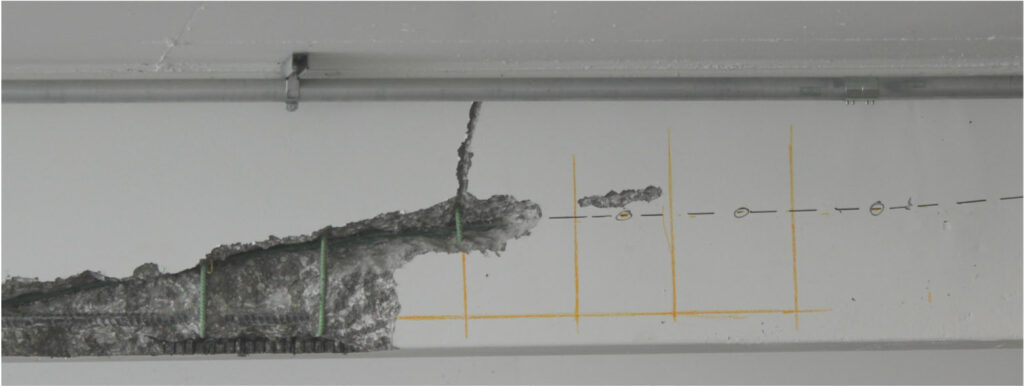RainierGPR Service Areas: Top Concrete Scanning Services Across Regions
RainierGPR Service Areas: Top Concrete Scanning Services Across Regions
Blog Article
Concrete Scanning: An Essential Action In The Direction Of Ensuring Structural Stability and Security
In the realm of building and construction and framework upkeep, the significance of concrete scanning can not be overemphasized. By employing innovative modern technology and techniques, concrete scanning offers as a pivotal device in guaranteeing that the stability and security of structures and bridges are maintained to the greatest requirements.
Value of Concrete Scanning
Concrete scanning plays an important duty in guaranteeing the structural honesty and safety and security of buildings and infrastructure tasks. By utilizing innovative modern technologies such as ground-penetrating radar (GPR) and electromagnetic induction, specialists can non-destructively check concrete structures to detect possible defects, spaces, embedded things, and support design. This process enables early discovery of anomalies that can jeopardize the security of a structure, preventing pricey problems and making certain the safety and security of occupants.
Concrete scanning is particularly important during the planning and construction stages of a task. Before boring, reducing, or coring into concrete, scanning assists recognize the precise places of rebar, post-tension wires, and other ingrained components, reducing the danger of accidental hits that might cause structural weaknesses. In addition, concrete scanning aids in quality control by verifying the density of concrete covers and spotting any kind of discrepancies that may affect the total longevity of the framework. Eventually, purchasing concrete scanning solutions is not only a positive step to reduce threats but additionally an essential action in the direction of maintaining the long-term safety and security and stability of structures and facilities.
Technology for Concrete Examination

Advantages of Very Early Discovery
Timely discovery of architectural issues can significantly reduce threats and make certain the durability of building and construction tasks. By recognizing possible troubles early on in the construction procedure, stakeholders can take aggressive measures to address issues prior to they rise into larger and more pricey problems. One of the vital benefits of early discovery is the avoidance of architectural failures, which can position significant security dangers and lead to task delays and financial losses.
Moreover, early discovery permits prompt repair services and upkeep, which can assist prolong the life-span of the structure. By resolving concerns immediately, building and construction groups can avoid costly repair work or perhaps the requirement for early replacement of structural elements. This positive approach not just saves time and cash yet likewise boosts the general safety and security and toughness of the construction job.
Additionally, early discovery can improve job planning and decision-making by providing stakeholders with valuable understandings into the condition of the structure. Armed with this information, task managers can make informed options pertaining to building and construction materials, methods, and timelines, leading to extra effective and effective job end results.
Making Certain Architectural Stability
Making certain the architectural security of a construction task is vital to its safety and durability. Architectural security describes the ability of a building look at this site or framework to preserve its type and feature under ecological problems and different lots. To accomplish this, comprehensive analysis and surveillance of the framework are crucial. Concrete scanning plays a vital function in making sure architectural security by detecting prospective issues such as gaps, delamination, or reinforcement rust that could endanger the honesty of the structure with time.
By using sophisticated scanning technologies like ground-penetrating radar (GPR) and electro-magnetic induction, building and construction specialists can non-invasively evaluate concrete frameworks to determine locations of problem under the surface this link area. This positive approach enables the very early discovery of defects or weak points, making it possible for punctual repairs or reinforcement to avoid architectural failures.
Normal concrete scanning during various construction phases and throughout the life cycle of a framework can help preserve its security, mitigate dangers, and make sure the security of residents. By prioritizing structural stability via concrete scanning, building and construction tasks can improve their strength and longevity, inevitably contributing to better safety and security and long life.

Preventing Vital Failures
To protect against devastating occasions, thorough surveillance and aggressive upkeep are essential in preventing vital failures within structural structures. Spotting possible problems prior to they rise is vital to stop architectural failings. Implementing regular inspections, such as concrete scanning, can disclose covert problems like voids, cracks, or deterioration that could jeopardize the honesty of a structure. By utilizing advanced scanning modern technologies like Ground Passing through Radar (GPR) or Concrete X-ray, engineers can non-destructively assess the condition of concrete and recognize weak factors that call for support or fixing - RainierGPR Service Areas.

Final Thought
To conclude, concrete scanning plays a vital role in guaranteeing architectural stability and safety and security by using sophisticated modern technology for very early discovery of possible problems. This positive method assists prevent essential failings and makes certain the security of frameworks. It is important find more information to prioritize concrete evaluation as a typical technique to protect the longevity and safety of structures and facilities.
Concrete scanning plays a critical role in ensuring the architectural stability and safety and security of structures and infrastructure projects. Furthermore, concrete scanning help in quality control by confirming the density of concrete covers and spotting any type of discrepancies that may affect the general longevity of the framework. Concrete scanning plays a vital function in making certain architectural stability by identifying potential concerns such as spaces, delamination, or reinforcement deterioration that might jeopardize the honesty of the framework over time.

In final thought, concrete scanning plays a vital function in making sure architectural stability and security by making use of sophisticated technology for early detection of prospective problems.
Report this page